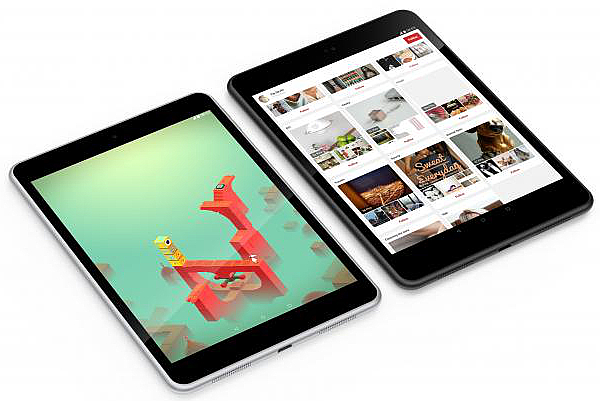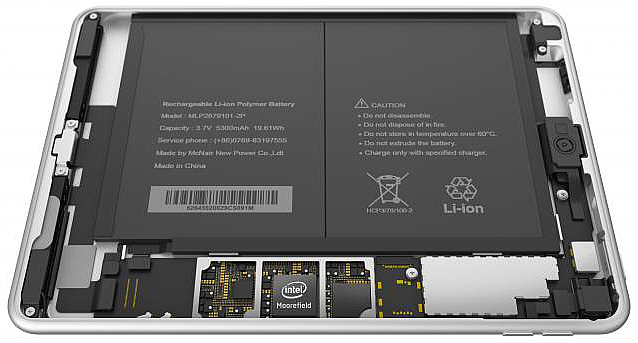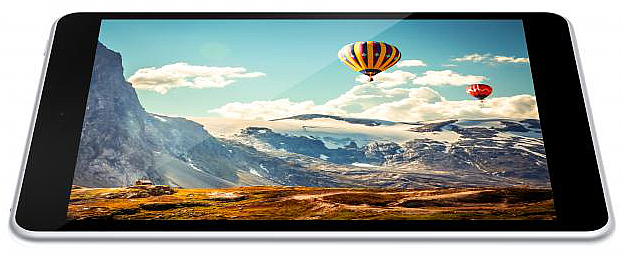'Nokia Technologies' Formed, Dishes Out Android Tablet
Just months after Nokia sold its Lumia and Asha businesses to Microsoft, a new division called Nokia Technologies has revealed an upcoming tablet sporting Android 5.0 "Lollipop" called the N1. This is the new division's first Android tablet, and it comes packed with proprietary features such as the Nokia Z Launcher and "Scribble" technology. The tablet is expected to arrive in Q1 2015, and manufactured and sold by OEMs.
So what gives? How is this new arm of Nokia able to manufacture a tablet when the mobile division was sold to Microsoft? According to a Nokia rep, the Microsoft deal means that Nokia cannot license its brand for use on smartphones until after the end of 2015. Nokia also cannot sell its own smartphones until sometime in 2016. This agreement does not apply to tablets.
Nokia revealed that the tablet has a 7.9-inch fully-laminated display with a 2048 x 1536 resolution and Gorilla Glass 3 protection. This screen is backed by a 64-bit quad-core Intel Atom Z3580 processor clocked at 2.3 GHz, a PowerVR G6430 GPU clocked at 533 MHz, and 2 GB of LPDDR3 memory. All of this is powered by a 5300 mAh lithium polymer battery.
The specs also show that the tablet includes 32 GB of storage, an 8MP camera with autofocus on the back, a 5MP camera on the front (fixed focus), two 0.5 watt stereo speakers, a microphone, Wireless AC and Bluetooth 4.0 connectivity, and a micro USB 2.0 port with a Type-C reversible connector. Overall, the tablet measures just 0.27 inches thin, 7.90 inches high and 5.45 inches wide.
The big selling point for Nokia is its "predictive" engine, which is powered by the company's Nokia Z Launcher. This feature keeps a tab on what the user is doing, learning where the user is going, and what he/she does on the tablet. The engine will provide shortcuts on the Home screen so that the user has immediate access to the most-used features and destinations.
Another important feature is the company's "Scribble" technology. This allows users to draw a letter on the home screen by merely using a fingertip. As a result, a list of web content, apps and so on beginning with that letter will be generated and displayed on the Home screen. For instance, draw an "A" on the screen and a list could include Angry Birds, Apple.com, Amazon.com, and a link to the address book.
The big news here is that Nokia has formed a new "Technologies" division that is producing a new tablet. A rep from Nokia said that the N1 has already been licensed out to an external partner who will manufacture and distribute the device. The rep couldn't comment on other products that Nokia Technologies has in the pipeline.
Get Tom's Hardware's best news and in-depth reviews, straight to your inbox.
Ultimately, the specs of the N1 show that Nokia Technologies means business in the tablet market, that it's not producing a budget-focused "me too" product. The biggest contender will be Apple iPad Mini 3, which currently has a starting price of $399 and a strikingly similar form factor. However, at this time, the Nokia N1 is heading to China first for $249 in Q1 2015 and is expected to hit other European markets such as Russia thereafter. With that in mind, we'll have to wait and see how well the Nokia device will fare against the Apple rival and similar tablets sold overseas.
Currently, a possible launch in North America is unknown at this time.
Follow Kevin Parrish @exfileme. Follow us @tomshardware, on Facebook and on Google+.

Kevin Parrish has over a decade of experience as a writer, editor, and product tester. His work focused on computer hardware, networking equipment, smartphones, tablets, gaming consoles, and other internet-connected devices. His work has appeared in Tom's Hardware, Tom's Guide, Maximum PC, Digital Trends, Android Authority, How-To Geek, Lifewire, and others.
-
red77star Good for Nokia. Microsoft have Lumia brand but knowing Microsoft they are not going to do anything with it and eventually will die. I hope Nokia frees themselves from Microsoft fingers and do their own thing with Android powered devices. I am sure I will be buying Nokia products in the future.Reply -
soldier45 As usual the third world countries get the goods before the US. I miss the old days when we got the newest stuff first.Reply -
gbair I'm hoping Nokia gets back into the smartphone arena by that time, especially with the move to Android. I like the sturdy feel of their phones, can't think of what else to replace my Lumia 1020 with.Reply -
unksol ReplyAs usual the third world countries get the goods before the US. I miss the old days when we got the newest stuff first.
Since when are China, Russia, and Europe the "third world"? For that matter how many people in third world countries have $249 to spend on a tablet? Just... wow.
You send your product where it will sell and the US is a largely saturated market. -
ferooxidan Finally! The reign of the king will be back in time. I've been waiting for the real Android device for so long. I always know that a Android device coming solely from Nokia would be awesome. I think the deal with Microsoft is a good deal for Nokia, because M$hit never do something right if it is not their main product. Kiss those WP good bye and hello "real" Android devices. You should have jumped in Android bandwagon from the start, Nokia.Reply -
InvalidError Reply
Vendors do not want to undermine their high-margin North-American sales too much - most comparable devices in NA cost twice as much if not more.14615387 said:As usual the third world countries get the goods before the US. I miss the old days when we got the newest stuff first. -
Bloob Similar form factor: a thin aluminum slab with a 4:3 display, and that's pretty much where the similarities end. Nexus 9 looks more like an iPad, but it's different aspect ratio.Reply
The N1 seems to be very well priced, and if it ever comes to northern Europe, I'll get it. -
Flying-Q ReplySimilar form factor: a thin aluminum slab with a 4:3 display, and that's pretty much where the similarities end. Nexus 9 looks more like an iPad, but it's different aspect ratio.
It took fewer similarities for Apple to successfully sue Samsung over the Tab10 in Europe and USA
The N1 seems to be very well priced, and if it ever comes to northern Europe, I'll get it. -
silverblue "Third World" is a term that originally meant a neutral, non-aligned country within the context of defining the sides during the Cold War. It's only therafter that it started being misused as a way of defining developing countries, whilst at the same time ignoring the fact that there was a "Second World" to begin with.Reply
Ireland is a good example to use here - third world, but developed. -
qlum Quite interesting to see that Nokia showed firefox in its homescreen, not a lot of android devices use firefox as their default browser. Personally as a firefox user I do like this although the mobile version of firefox fails pretty hard on the costumization department.Reply


